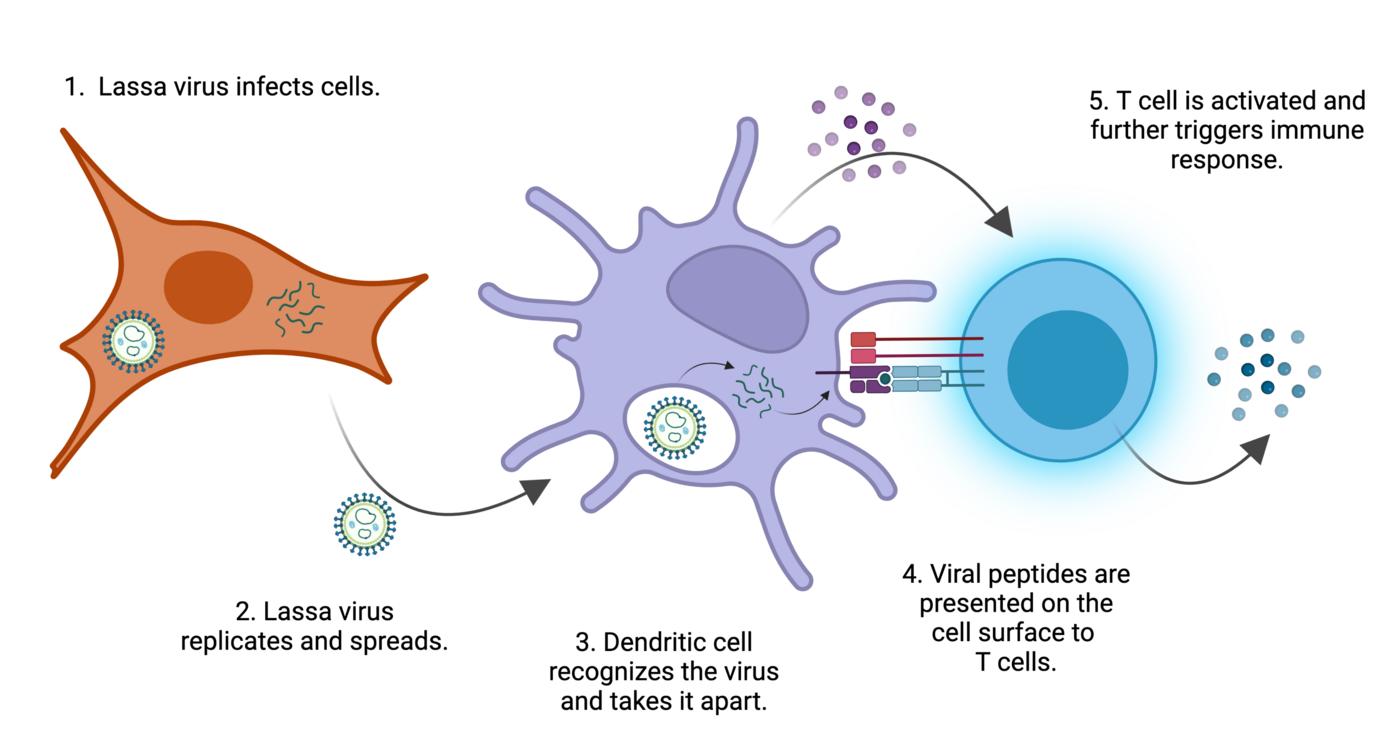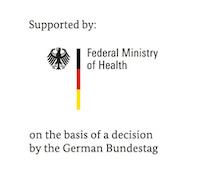Interaction of Dendritic Cells and T cells in hemorrhagic fever virus diseases
The immune system defends the body against pathogens, such as viruses and bacteria. The innate and adaptive immune response are the two branches of the immune system and work together to clear infections. Innate immune cells, such as dendritic cells, act as part of the first line of defense. An early activation of the immune system has been shown to play a major role in disease outcome after Lassa virus infections. When dendritic cells encounter a pathogen, they become activated and present the pathogen's antigens to specialized cells of the adaptive immune system, such as T cells.
T cells, also known as T lymphocytes, are highly efficient in eliminating pathogens and protecting the body from re-infection. They come in two main subsets, helper and killer T cells, which can be distinguished by their cell surface receptors. Helper T cells express the CD4 receptor, control and regulate the activation of killer T cells by producing different cytokines. Killer T cells, on the other hand, are recognized by a CD8 receptor and their main function is to eliminate infected cells.

To make sure only infected cells are eliminated, killer T cells have to be able to distinguish between healthy and infected cells. At all times, every cell displays antigens on their surface by major histocompatibility class I molecules (MHC-I). These antigens represent the composition of the cell and also communicate a cell’s ‘health status’. CD8 T cells are able to detect antigens bound to MHC-I with their specific T cell receptor (TCR). If this happens, infected cells can be recognized and get killed. However, CD8 T cell activation is a complex mechanism requiring costimulatory signals. The quality and magnitude of the T cell response (and the entire adaptive response) are highly dependent on signals derived from dendritic cells. Dendritic cells are also able to present antigens originating from other cells or cell debris by a mechanism called cross-presentation. This is an important link between the innate and adaptive immunity and creates a substantial checkpoint in the immune response against viruses.
In our group, we are looking into these 3 main components of the immune system:
1) the role of dendritic cells as first line of defense,
2) the influence of T cell activation and proliferation on viral clearance and patient survival and
3) the relevance of cross-presentation in the context of a Lassa virus infection
in order to better understand the pathogenesis of the virus as an important step in gaining knowledge for better patient care.



![[Translate to English:] [Translate to English:] Logo DFG](/fileadmin/media/Allgemeines_und_Platzhalter/Logo/Logo_DFG.png)
![[Translate to English:] [Translate to English:] Logo DZIF](/fileadmin/media/Das_Institut/Kooperationen/Logo_DZIF_01.png)
![[Translate to English:] [Translate to English:] Logo Leibniz Gemeinschaft](/fileadmin/media/Das_Institut/Kooperationen/Logo_Leibniz_Gemeinschaft.png)
![[Translate to English:] [Translate to English:] Logo Jürgen Manchot Stiftung](/fileadmin/media/Allgemeines_und_Platzhalter/Logo/Logo_Juergen_Manchot_Stiftung.png)





